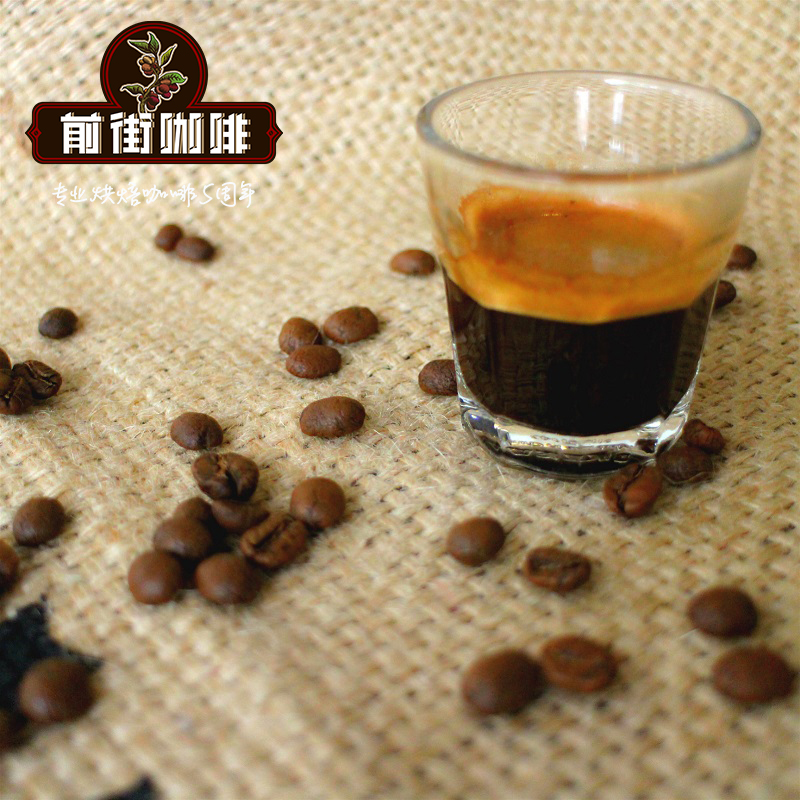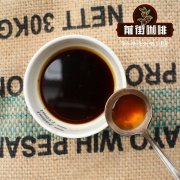The world of coffee is full of Guatemalan cigarette coffee. Have you ever known it? Is it herbal?

Professional coffee knowledge exchange More coffee bean information Please pay attention to coffee workshop (Weixin Official Accounts cafe_style)
Guatemala has a combination of tropical rain forests, volcanic geology, highland valleys and a variable microclimate, coupled with several rainfall patterns and fertile soil, which make Guatemalan coffee rich and diverse. Coffee became an important cash crop in Guatemala in 1845 with the establishment of the Coffee Planting and Extension Commission, accounting for 90% of Guatemala's total exports by 1880, and then suffered political turmoil in the 20th century, which hit agriculture hard, but coffee production peaked in the millennium.
The Republic of Guatemala (Spanish: República de Guatemala), commonly known as Guatemala, is located in northern Central America, bordering Mexico to the northwest, Belize to the east, Honduras to the Caribbean Sea, El Salvador to the southeast, and the Pacific Ocean to the southwest.
Coffee arrived in the United States via the Caribbean Islands between 1720 and 1730, the story of the famous French army captain Mathieu de Clieu. After that, Jesuit teams spread coffee to other countries. During this period, Guatemala and the surrounding lands belonged to the same Spanish territory. The earliest plantations were planted around 1770. At that time, other crops used as sources of pigment were at the heart of the colonial economy.
It was once the most brilliant core of Mayan civilization and the political and economic center of Spanish colonization of Central America. Coffee has been Guatemala's economic lifeline for more than a century, and its crisscross mountain terrain, volcanic lakes, plains and mountains, and adjacent Atlantic and Pacific oceans interweave more than 300 microclimates, thus creating unique flavors for each region.
Gua coffee generally has five common producing areas: Vivetenango (Huehuetenango), Antigua (Antigua), Cobán (Cobán), Atitlán (Atitlán), Acatenango (Acatenango), more recommended are: Vivetenango, the highest altitude, less rainfall, ripening late, taste with fruit and flowers, is recognized as the best coffee producing areas. The second is sweet potato area, where coffee trees are planted at an altitude of 1300~1600 meters. The climate is dry and the coffee aroma is uniform, with nuts, spices and chocolate flavor. Generally speaking, melon country coffee taste fine, elegant, sweet, with fruit, but also more complex, rich, rich, with chocolate, toffee aroma.
Solarization is a rare method of processing green beans in Central and South America. Because of the obvious rainy season and microclimate, Guatemala fine coffee, which has been mainly treated by washing for 150 years, has begun to try solarization in response to market demand in recent years.
Following the ancient Mayan culture's method of drying seeds, the same wisdom is applied to specialty coffee, producing a rich fermented aroma and multi-layered flavor that is different from typical washed coffee.
Guatemala coffee
English Name: Guatemala Coffee
Honors: Cigarette Coffee
Origin: Guatemala
Taste and characteristics: green beans, beans thin, sour one of the varieties, taste sour alcohol and slightly wild, best used to blend coffee, rich taste, with tobacco flavor, smooth taste slightly charcoal.
Important Notice :
前街咖啡 FrontStreet Coffee has moved to new addredd:
FrontStreet Coffee Address: 315,Donghua East Road,GuangZhou
Tel:020 38364473
- Prev

A brief Analysis of the advantages of growing Coffee in Brazil, the largest producer of Coffee
Professional coffee knowledge exchange more coffee bean information Please pay attention to the coffee workshop (Wechat official account cafe_style) Coffee is a tropical plant, the planting area is on the axis of the equator. It is planted between the Tropic of Cancer at about 25 degrees north and south latitudes. This area is also known as the "bean belt" or "coffee belt", tropical highlands or mountains at an altitude of 500-2500 meters.
- Next

To drink good coffee, you should pay attention to simple and easy-to-understand knowledge. The difference between single coffee and Italian coffee.
Professional coffee knowledge exchange more coffee bean information please follow the coffee workshop (Wechat official account cafe_style) "single coffee" refers to this single style of coffee beans from a single country or region. It can be compared to a coffee solo. If a bag of coffee is marked with the name of a coffee producing country (coffee beans are not produced in continental Europe, if the name of a city in an European country is written on the label
Related
- Beginners will see the "Coffee pull flower" guide!
- What is the difference between ice blog purified milk and ordinary milk coffee?
- Why is the Philippines the largest producer of crops in Liberia?
- For coffee extraction, should the fine powder be retained?
- How does extracted espresso fill pressed powder? How much strength does it take to press the powder?
- How to make jasmine cold extract coffee? Is the jasmine + latte good?
- Will this little toy really make the coffee taste better? How does Lily Drip affect coffee extraction?
- Will the action of slapping the filter cup also affect coffee extraction?
- What's the difference between powder-to-water ratio and powder-to-liquid ratio?
- What is the Ethiopian local species? What does it have to do with Heirloom native species?

